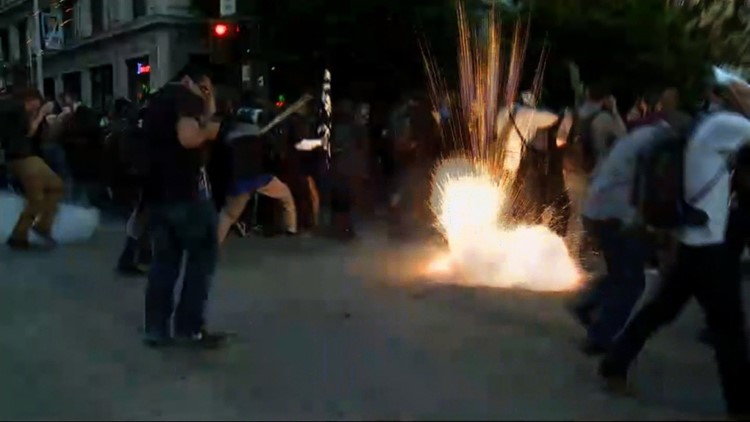May Day protests in Seattle turned violent on Sunday, as protesters lit fireworks and threw rocks and Molotov cocktails at police, Seattle Police said.
After a peaceful march was held earlier in the day, nine people were arrested and five officers were injured in the clashes, according to police.
Seattle Mayor Ed Murray thanked police for their “extraordinary work” in a statement.
“It is unfortunate and deeply regrettable that in a city that goes to incredible lengths to respect First Amendment rights, there are some who disregard our values and engage in senseless acts of violence and property destruction,” he said. “My thoughts are with the officers who were injured.”
One officer sustained a facial laceration, another was bitten and a third was hit by a Molotov cocktail but not burned.
Seattle Police Chief Kathleen O’Toole said that her officers underwent “enhanced crowd management training” and had planned for the May Day unrest.
The city is known for having particularly unruly May Days in recent years, but the observance is recognized around the globe.
There were gatherings in Los Angeles, Paris, Istanbul, Moscow, Manila and London on Sunday, some of which were also marred by violence.
May Day’s origins can be traced back to ancient times, when it was a Pagan festival celebrating spring.
But its history as a protest day is more recent — May 1 was declared “International Workers’ Day” by the International Socialist Conference following the violent protests in Chicago’s Haymarket Square in 1886.
Protesters today still often gather on May 1 to demand better working conditions.



